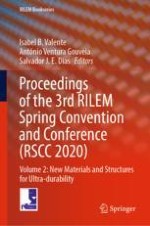2021 | OriginalPaper | Chapter
Material Characterization of Geopolymer Concrete for Its Beneficial Use in Composite Construction
Authors : Joachim Juhart, Christopher Gößler, Cyrill Grengg, Florian Mittermayr, Andrew McIntosh, Bernhard Freytag
Published in: Proceedings of the 3rd RILEM Spring Convention and Conference (RSCC 2020)
Publisher: Springer International Publishing
Activate our intelligent search to find suitable subject content or patents.
Select sections of text to find matching patents with Artificial Intelligence. powered by
Select sections of text to find additional relevant content using AI-assisted search. powered by
